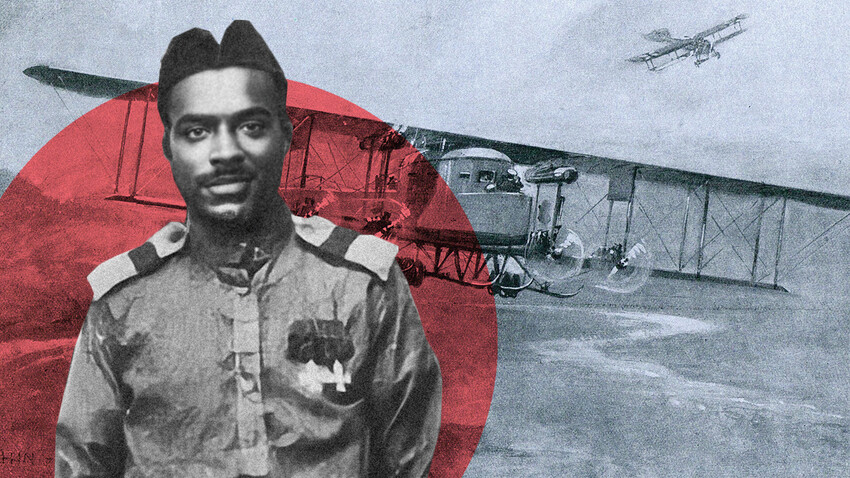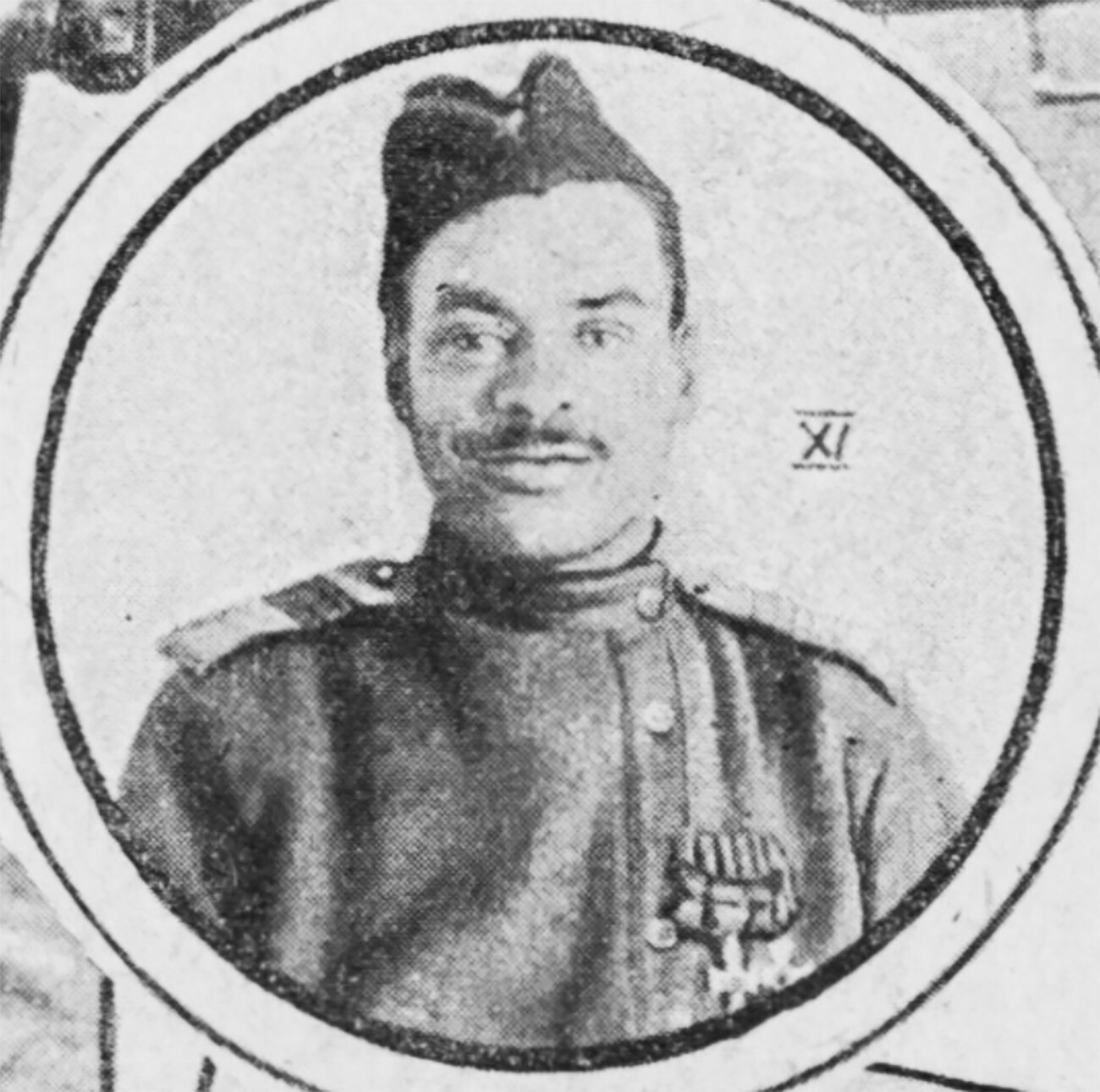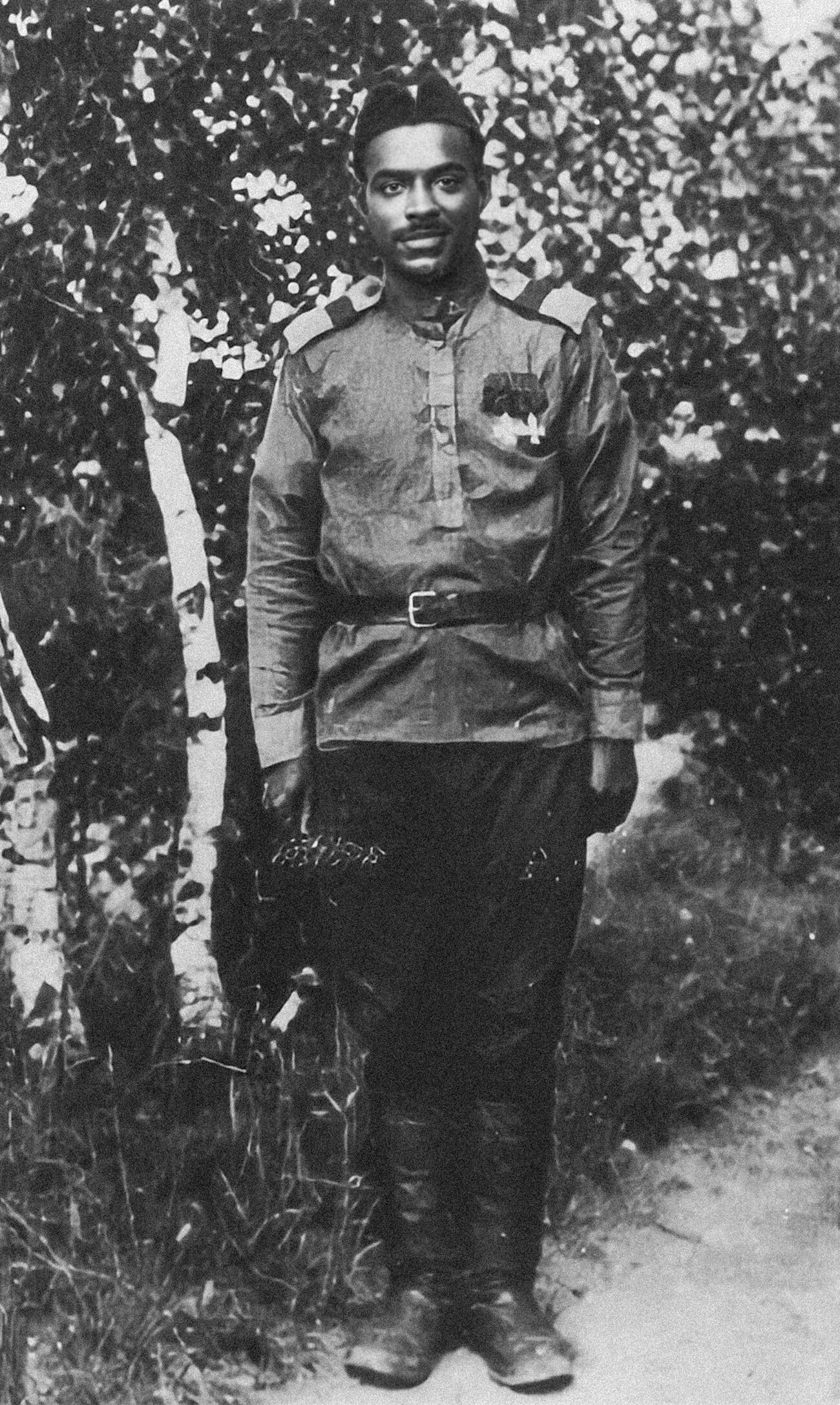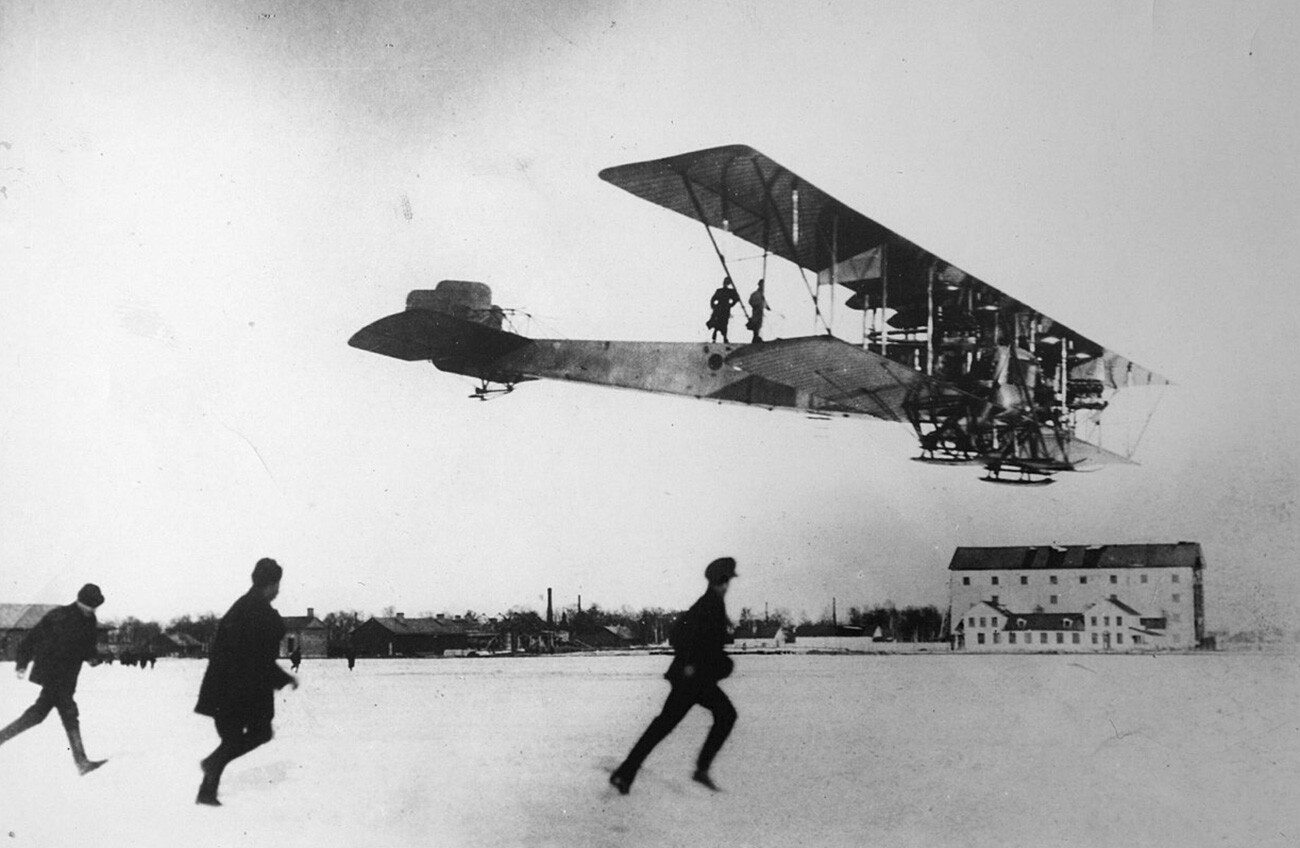
After landing, more than 70 hits, including on the engines, were found in the hull of the ‘Ilya Muromets-10’ four-engine Russian bomber plane. The crew managed to land the damaged aircraft and, at the same time, survive, because, right during the flight, under enemy fire and literally standing on the wing, the engines were being repaired by a black Parisian Marcel Pilat.

Marcel Pilat photographed for 'Ogonyok' magazine in 1916
Public domainIt happened in April 1916 on the fronts of World War I – Russian aviation attacked the Daudzevas train station in Latvia, occupied by the Germans and protected by enemy anti-aircraft guns. The Germans met the Russian plane with hurricane fire. As soon as the biplane received the first damage, Marcel, who was listed in the crew as a junior motorist, climbed onto the wing to dig into the engines, in order to continue their work at least a little longer. But then, the main pilot got injured and the plane went into a dive.
The co-pilot managed to take control and put the plane on a course home. All the crew members had already thought that Marcel had died by falling off the wing. And then, the motorist crashed down from the upper hatch with a noise.
“You were supposed to fly to earth on your own!” someone joked. It turned out that Marcel had prudently tied himself with a belt to the wing post and, during the fall, he was actually dangling in the air. The plane managed to be brought to the home airfield, although it had a broken wing, which was only held in place due to the lifting force in flight. Upon landing, the ‘Ilya Muromets’ half collapsed.

Marcel Pilat in his uniform as a senior non-commissioned officer of the Russian Imperial Army, decorated with both of his St. George's crosses, circa 1916
Public domain"Marcel Pilat is a French citizen. Nine years ago, his mother was brought to Russia by a wealthy family as a nanny and, with her, a curly-haired and lively teenager," the ‘Ogonyok’ magazine wrote about Marcel in 1916. "Cold Russia has become the second homeland for the black Pilat. Now he is married to a Russian and has a child. When the war began, he, as a French citizen, had to return to the ranks of Joffre (Joseph Joffre (1852-1931), Marshal of France – ed.), but stayed, joining the Russian army as a volunteer, first as a driver, then as a motorist on an airship," Ogonyok reported.
READ MORE: How black people first came to Russia
It is known from the documents that Marcel Pilat was born in 1890 in Paris – that is, he was not a "black slave". He came to Russia at the age of 17 and already spoke Russian well. Marcel's biography was one of a working man – he worked as an automobile mechanic and, later, at the start of World War I, he began to assemble aircraft engines in St. Petersburg. In September 1915, as one of the best motorists, he was transferred to the active Air Force as a junior motorist. From the end of 1915, he served on the ‘Ilya Muromets-10’ aircraft, during which he received two St. George Crosses. The second feat, for which he received the "George" of the 3rd class and promotion to senior non-commissioned officer, we described at the beginning of the article. The first feat took place a month earlier.

The prototype of 'Ilya Muromets' plane during landing
Public domain"For the fact that, on March 26, 1916, during a flight on the ‘Ilya Muromets-10’ airship, when the tube connecting the water pump to the water pipe was cut… and water began to pour out in a wide stream through the hole in the tube, which threatened death for the aircraft motor, he clamped the hole with his hands and he stopped the further outflow of water, after sitting on the wing for 1 hour and 10 minutes, which made it possible to return home and sit on the airfield," it was written in the order's characteristics. This was the feat that got Marcel Pilat his first St. George cross – 4th class.
In November 1916, Marcel Pilat distinguished himself during the combat flight of another ‘Ilya Muromets’ – as a machine gunner. He himself asked for this dangerous and responsible position and then gave aircraft designer Igor Sikorsky a request to make the machine gunner's seat collapsible, so that it would not interfere with shooting. His advice was taken into account with further improvements.
By the fall of 1916, Marcel had become a media personality: "His black eyes are sparkling, his teeth flashing and his wide nose shines. But, wait – a Russian soldier's cap on his head and such a distinct Russian pronunciation. Everyone comes to him with the question: ‘How did you get here?’ Marcel is eager to talk. He speaks Russian perfectly, only swallowing the endings. He likes soldier's harsh words, burning as capsicum," a pre–revolutionary journalist of ‘Ogonyok’ magazine describes Marcel Pilat not without admiration.
READ MORE: How did Africans prosper in Tsarist Russia?
Marcel was demobilized from the Russian army after the 1917 Bolshevik Revolution, at the beginning of 1918, and left for his homeland, where he continued to serve in the ranks of the French army. After the war, he continued to live in Paris, where he worked in his main specialty – as an auto mechanic. What became of his wife and child, which were mentioned in the article, we do not know. There are rumors that he never did get married in France and had no children.
If using any of Russia Beyond's content, partly or in full, always provide an active hyperlink to the original material.
Subscribe
to our newsletter!
Get the week's best stories straight to your inbox